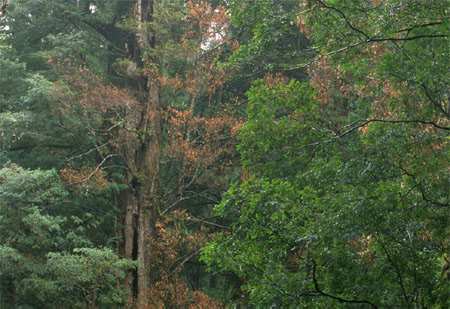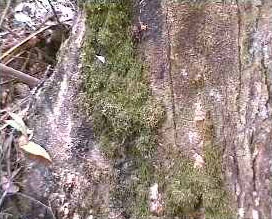
Explanation of Myrtle Wilt
Myrtle Wilt is a disease which attacks Myrtle Beech trees, the primary canopy species for Cool Temperate Rainforest throughout the Otways. Although a naturally occurring phenomenon, the presence of Myrtle Wilt is increased by human disturbance, notably logging practices.
Myrtle Wilt occurs when a fungus (Chalara Australia) enters a myrtle beech tree (Nothofagus cunninghamii) through an exposed flesh wound. These wounds are naturally caused when tree limbs are broken off during a storm. The fungus grows into the tree and chokes the flow of sap (containing vital nutrients) to the tree crown, killing the tree.
The myrtle wilt fungus can also infect neighbouring trees through root graft. As the tree foliage dies, it turns yellow and then brown hence the name myrtle wilt. It can take up to three years from the time of infection for the tree to die.

Brown foliage of infected myrtle beech (Youngs creek)
As the tree dies and sapwood dries out, pin hole borer beetles (Platypus subgranous) bore into the wood and lay eggs. The pin hole borer beetles only eat dead myrtle wood and will not bore into a healthy live tree. When the larvae pupate, they drill their way out the tree and fly off into the forest to find another dying tree infected by myrtle wilt fungus. It is likely that dust (frass) produced by the boring beetles as they chew through wood becomes airborne and helps spread the myrtle wilt fungus spores throughout the forest.

White dust from pin hole borer beetles on trunk of infected myrtle beech (Ciancio creek)
Don't know the meaning of a word? Check the glossary.